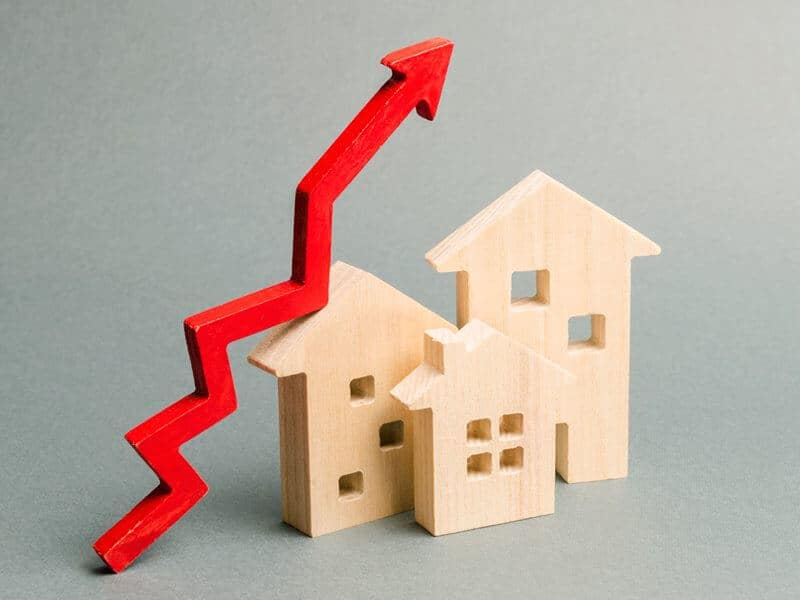While the world of economics can be a baffling business, understanding how the relationship between inflation and interest rates works is worth the effort.
If there’s two things dominating the headlines in Australia right now, it’s interest rates and inflation – and while anyone with a loan or a sizable savings account is paying attention to what’s happening with interest rates, understanding how inflation affects the economy is a slightly more complicated matter.
While most people can grasp that interest rates are the price we pay to borrow money, inflation is a bigger beast to navigate. However, understanding the unique and symbiotic relationship between inflation and interest rates might even help us to predict the future.
The Relationship Between Inflation And Interest Rates
Like it or not, the inflation rate influences almost every aspect of our day to day lives. From lettuce tripling in price to skyrocketing interest rates to raising the minimum wage, inflation has tentacles that reach into all corners of the economy, and has an enormous impact on the global economy.
In a nutshell, inflation is a term we use to describe the measurement of how much more expensive a set of goods and services has become over a certain period of time. To measure the average consumer’s cost of living – and therefore the current rate of inflation – government agencies will usually conduct surveys to identify a basket of commonly purchased items and track their cost over time, such as the price of rent, a mortgage, and even a loaf of bread.
For the last thirty years, the Reserve Bank of Australia has set the ideal target range of inflation between 2-3%, with the end goal being to maintain price stability and full employment. Australia’s inflation rate, or Consumer Price Index (CPI), is currently sitting at 6.1%.
What’s worse is that the Commonwealth Treasury has recently revised its economic forecasts, and inflation is now predicted to hit 7.75% by the end of 2022, before falling back to 3.5% by the end of 2023 before dropping again to 3% by 2024.
If the economy is growing too fast, it can lead to high inflation while weak economic growth can lead to unemployment, reduced incomes and lower living standards. As we are currently witnessing right around the nation, the purchasing power of consumers – or the real value of money – is reduced when inflation is too high, with ordinary Australians left to bear the brunt of the economic changes.
From increasing the cash rate, implementing the temporary fuel excise, issuing price caps to the suspension of electricity trading and even triggering an increase to minimum wage, government bodies are evidently doing all that they can to stabilize the economy and shield Australia from the negative effects of high inflation – and that includes raising the cash rate, which in turn influences the price of interest rates.
In its simplest form, the cash rate is the interest that every bank has to pay on the money it borrows, and is otherwise known as the overnight money market interest rate. As the Reserve Bank of Australia is responsible for determining the cash rate, their decisions ultimately dictate what the price of interest rates are for all lending institutes.
In essence, by raising interest rates on credit products, consumers and businesses are less likely to borrow funds and therefore spending decreases. When this happens, the working theory is that this can slow down economic growth, and inflation therefore stabilizes to a more manageable rate. In real terms, it’s one of the few measures that federal bodies like the Reserve Bank Of Australia can implement that may influence and ideally reduce the cost of living.
While many Australians are locked into fixed interest rates that reflect the record lows we saw two years ago, others are facing hikes when their agreed fix term ends. If you’re feeling anxious about your financial future and need some guidance on what the next steps look like, it’s always worth having a chat with a reputable mortgage broker – but where can you find one?
Your Guide For Navigating The World Of Home Loans
With a background in banking, finance, business development and project management, there’s no better advocate to have on your team than Nikki Berzin. As a fully qualified mortgage broker and director of Cherry Lending & Finance, Nikki is passionate about all things finance, and empowering her clients with the tools to hit their property goals is what she does best.
If you’re looking to get into your first home, purchase an investment property or even want to look at your options for refinancing, the first step is starting the conversation. Get in touch with Nikki today, or call her directly on 0427 374 155 to bring your mortgage dreams to life.
Disclaimer: Cherry Lending and Finance content provides general information only. The views and opinions expressed in this article are those of the author and do not necessarily reflect or represent the opinions of any other entity whatsoever with which I have been, am now or will be affiliated. Nor do they reflect the official policy or position of any agency, organisation, employer or company.
Credit Representative 499652 is authorised under Australian Credit Licence 389328.





